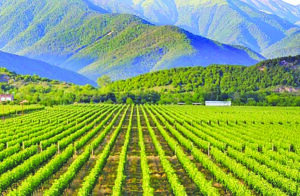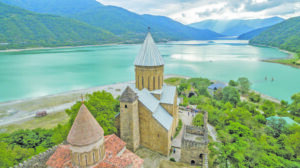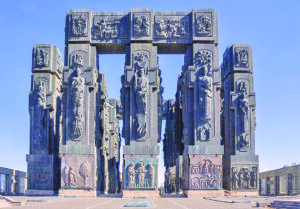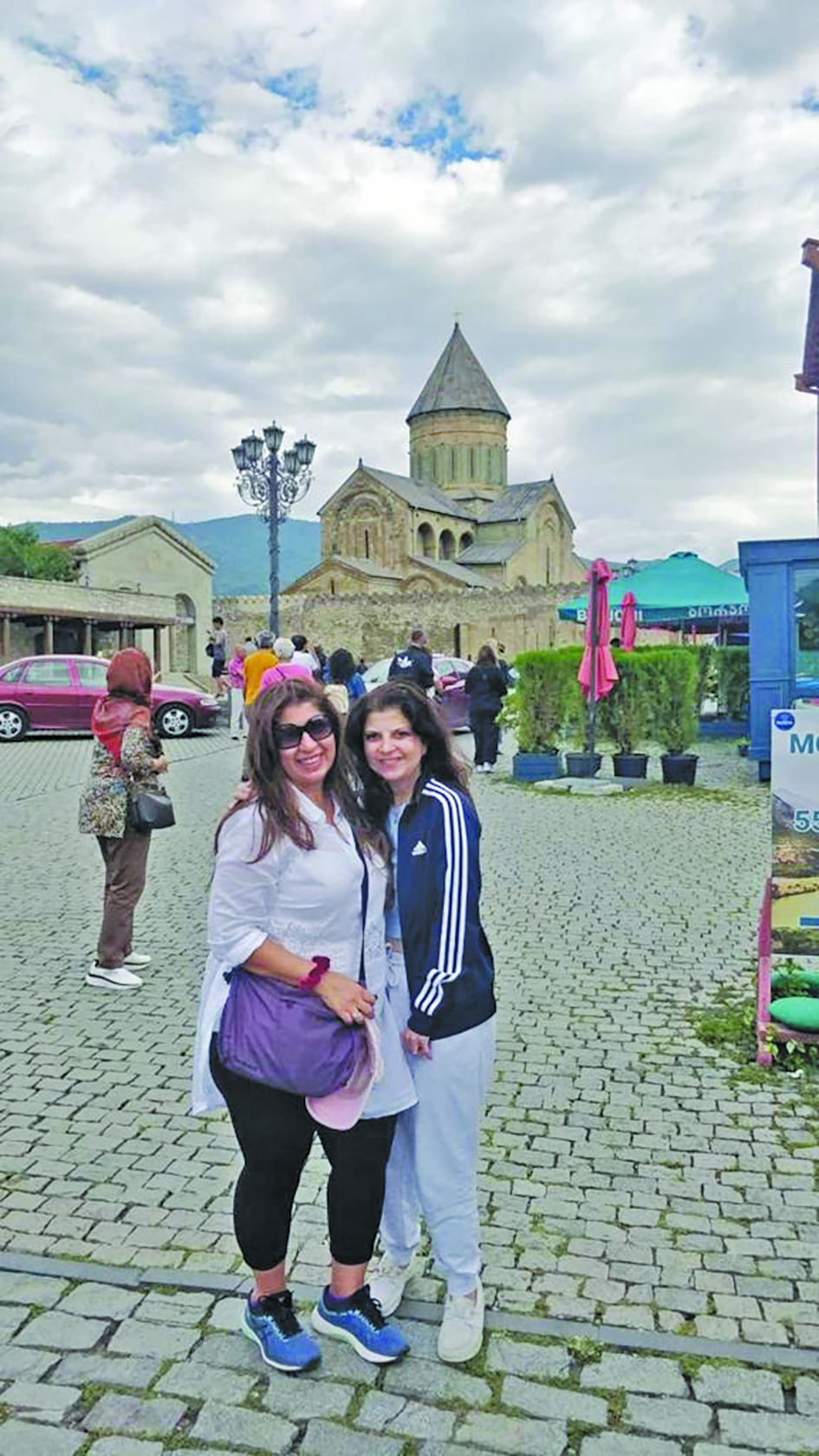 A 10-day international adventure through Georgia wasn’t vaguely on my wish list, but I couldn’t refuse a no-hassle, all-planned, organized itinerary – the highlight being the company of friends, sharing and chalking down memories together. Georgia and Armenia offer a piece of the Caucasus along with a taste of old-worldly East European charm. Bridging East and the West, these former Soviet republics boast thousands of years of history, jaw-dropping scenery and a rich cultural heritage.
A 10-day international adventure through Georgia wasn’t vaguely on my wish list, but I couldn’t refuse a no-hassle, all-planned, organized itinerary – the highlight being the company of friends, sharing and chalking down memories together. Georgia and Armenia offer a piece of the Caucasus along with a taste of old-worldly East European charm. Bridging East and the West, these former Soviet republics boast thousands of years of history, jaw-dropping scenery and a rich cultural heritage.
Located at the eastern end of the Black Sea, Georgia is situated at the strategically important crossroads where Europe and Asia meet, sharing borders with Russia, Azerbaijan, Turkey and Armenia. For centuries, Georgia was the object of rivalry between Persia, Turkey and Russia, before being eventually annexed by Russia in the 19th century. It emerged as an independent state, from the collapsing Soviet Union, in 1991.
Georgia is a small, beautiful country, with charm and eccentricity fused together, as a country infested with traditions and old-world culture moving into a new era. Boasting of a unique, ancient cultural heritage Georgia is home to the Caucasus, mountain villages, and the Black Sea beaches. It is famous for Vardzia – a 12th century cave monastery; and Kakheti – an ancient wine-growing region. It’s capital, Tbilisi, is known for diverse architecture and mazelike cobblestone streets of its old town.
The tour started at the Europe square and included Metehki Church. We used the Cable Car to the Narikala fortress. Later we drove to the erstwhile ancient capital of Georgia – Mskheta, visiting the Jvari monastery and Svetikhoveli Cathedral. A ride to Mtalsminda Amusement Park by tram offered excellent views of the city.
 A visit to Georgia without a complete day spent in Tbilisi would be a wasted trip. There is much to do – discovering Tbilisi’s historical Silk Road on the hillside banks of the River Mtkvari, or visiting the unfinished ‘Chronicle of Georgia’, also called the ‘Georgian Stonehenge’ or ‘History Memorial’ of Georgia, located near the Tbilisi Sea. It’s a collective of astonishingly huge pillars atop a hill – 16 pillars that are 30-35 meters tall with the top half featuring kings, queens and heroes while the bottom depicts stories from the life of Christ, giving out a dark, gothic and sinister vibe. The seduction of Tbilisi is slow and grows on you, leaving you increasingly entranced.
A visit to Georgia without a complete day spent in Tbilisi would be a wasted trip. There is much to do – discovering Tbilisi’s historical Silk Road on the hillside banks of the River Mtkvari, or visiting the unfinished ‘Chronicle of Georgia’, also called the ‘Georgian Stonehenge’ or ‘History Memorial’ of Georgia, located near the Tbilisi Sea. It’s a collective of astonishingly huge pillars atop a hill – 16 pillars that are 30-35 meters tall with the top half featuring kings, queens and heroes while the bottom depicts stories from the life of Christ, giving out a dark, gothic and sinister vibe. The seduction of Tbilisi is slow and grows on you, leaving you increasingly entranced.
Georgia offers a wide array of mesmerising monuments and scenic panoramas, including the Mtskheta-Mtianeti region where you can visit the Ananuri Fortress and Zhinvali Dam; Gudauri; Kazbegi; the Russian-Georgian friendship monument which is a steep uphill walk, with an extreme wind-chill factor, but well worth the freezing once you’re on top which offers a spectacular view!
You could drive to Kakheti or the ‘Cradle of Wine’, where archaeologists have traced the world’s first known wine creation, back to the people of the South Caucasus in  6,000 BC. Visit the winery and learn about the entire process while wine tasting nibbling on bits of cheese and olives to clean your palate, feeling a bit heady and all about ready to pick up some bottles to savour and sip later! A visit to Sighnaghi or ‘City of Love’ atop a hill surrounded by valleys and huge mountains is a must, as is visiting the nunnery of Bodhe, with a hike to the caved town of Uplistsikhe, submerged in mysterious ancient history!
6,000 BC. Visit the winery and learn about the entire process while wine tasting nibbling on bits of cheese and olives to clean your palate, feeling a bit heady and all about ready to pick up some bottles to savour and sip later! A visit to Sighnaghi or ‘City of Love’ atop a hill surrounded by valleys and huge mountains is a must, as is visiting the nunnery of Bodhe, with a hike to the caved town of Uplistsikhe, submerged in mysterious ancient history!
Georgia’s cultural heritage is equally ancient, rich and old – it flourished during the medieval period as a powerful kingdom, peaking between the 10th and 13th centuries; followed by a long period of Turkish and Persian domination. Georgia was annexed in the 19th century by Russia until the collapse of the Soviet Union. It was during the Soviet period that its economy was modernized and diversified. It experienced much civil unrest and instability through the 1900’s, declaring sovereignty on November 19, 1989 and independence on April 9, 1991.
Georgia is a country of rough haunting landscapes, legends and tales. With the notable exception of the fertile plain of the Kolkhida Lowland – ancient Colchis, where the legendary Argonauts sought the Golden Fleece – the Georgian terrain is mountainous, and more than a third is covered by forest or brushwood. The rugged terrain speaks volumes of ancient conquests, invasions and its war-torn history. The land, the city, the people, the religion and the dialect unfurl the past only trying to keep up with modern tones.
Its architectural monuments loom tall, mingling with modern buildings and structures that seem a bit out of place. The country has innumerable monuments, ruins, forts glorifying its ancient past. Go to Georgia if you must, go to Georgia if you can, come back either in love with this part of the world or come back perplexed. Either way, she will occupy your thoughts and memories for a long, long time to come!
- Navroz – A New Year, A New Beginning! - 15 March2025
- Women Are Simply Awesome! - 8 March2025
- Romantic Love – Win Some, Lose Some! - 8 February2025
